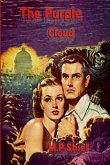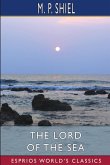Matthew Phipps Shiel (1865-1947), was a prolific British writer of fantastic fiction, remembered mostly for supernatural and scientific romances, published as novels, short stories and as serials. He wrote under the pen name Gordon Holmes. After working as a teacher and translator he broke into the fiction market with a series of short stories published in The Strand and other magazines. His early literary reputation was based on two collections of short stories influenced by Poe published in the Keynote series by John Lane, Prince Zaleski (1895) and Shapes in the Fire (1896), considered by some critics as the most flamboyant of the English decadent movement. His first novel was The Rajah's Sapphire (1896), based on a plot by William Thomas Stead, who probably hired Shiel to write the novel.








